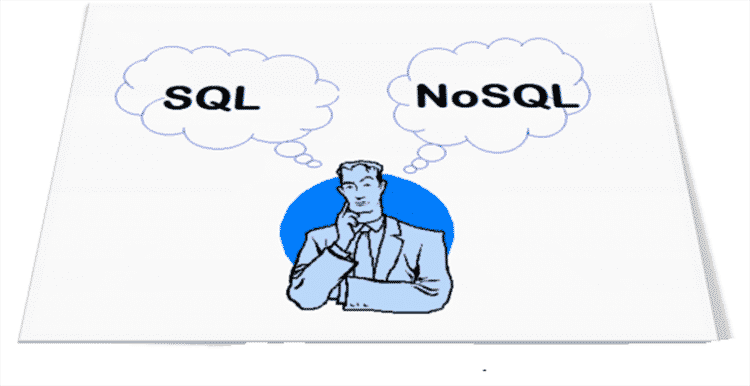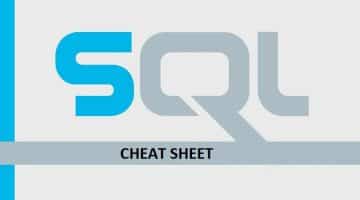This article compared SQL and NoSQL to illuminate the debate about the advantages and limitations of each. From the fuss of the NoSQL database grew to store data in the NoSQL database, I thought to explore the same concept to achieve depth. And it took me some time to find something that actually led to the evolution of the NoSQL database.
Well, it all boils down to research to deliver the best possible end-user experience a fast, real and connected way. Database developers hire freelancers online to try to do things that can provide better performance storage technology radically change service optimization.
Basic SQL databases and NoSQL:
What is the SQL DATABASE?
Speaking of SQL databases, the basic concept is that it is the relational database. Yes! SQL database is a relational database. So, what exactly is a relational database? Relational database using the strict relationship (often called tables) to store data. A relational database that matches the data using the common characteristics in the data set. And, the resulting group is called a schema.
A ratio (table) in a relational database is divided into groups of rows and columns. A tuple is a row of a database table, which are retrieved by a query.
So how can it help SQL?
SQL (Structured Query Language) is a programming language that is used to manage data in the relational database. Microsoft SQL Server is a good example. Microsoft SQL Server is to choose a relational database used to store data and applications, either on the same computer or network. It stands as source of income for some people that choose freelance jobs.
The main features of SQL Server
- A relational database is a set of data tables that provides predefined categories.
- Each table contains one or more data categories in columns.
- Each row contains a single instance of data by column categories.
- You can access the database user data without knowing the structure of the database table.
SQL database limitations
Scalability: Users need to measure the performance of relational database servers, which are expensive and difficult to handle. To measure the relational database must be distributed across multiple servers. Dealing with tables on different servers is a riot.
Complexity: With SQL Server data it must somehow correspond to the table. If the data does not fit on the table, and you have the structure of your database is complex and difficult to manage the drawings.
What is the NoSQL Database?
In recent years, the “one size” relevant data store-think has been questioned by both science and web companies, which led to the emergence of an exceptionally well several alternative databases. Movement and new data storage are usually grouped under the NoSQL term. Most company hire freelancers online to handle it.
The main feature of NoSQL is that they do not have fixed table schemas; generally avoid participating in operations and general horizontal scale. Academic researchers often refer to databases, such as structured storage, a term that includes a traditional relational database as a subset.
Commercializes NoSQL database also “non-acidic” (atomicity, consistency, isolation and durability). NoSQL database, in varying degrees, even possible to vary the data recording time. If there is a table or a NoSQL schema, and then understand how to view the database structure? Well, here is the answer. This also serves as freelance jobs for some developers.
- There are no scheduling requirements: Data can be entered into a NoSQL database without first defining a solid database schema. Accordingly, the format of the data can be changed is calculated at any time, without application downtime. This application offers flexibility, ultimately allowing the flexibility of the company.
- Automatic elasticity: NoSQL automatically distributes data across multiple servers without the help of the application. Servers can be added or deleted from the data layer without application downtime.
- Integrated cache: In order to increase the data according to the old system memory and improve performance procedures NoSQL data caching. This is in contrast to the SQL database where it is to perform with separate infrastructure.
- The description of the NoSQL data storage architecture, there are three types of popular NoSQL database.
- Key-value store: As the name suggests, is a key-value store is a system that stores index values for key recovery. The system may contain structured or unstructured data.
- Column-oriented database: Instead of storing data sets in a highly structured list of columns and rows with the same field sizes for each record, as in the case of relational databases, column-oriented database availability expandable column of data closely related.
- Based document storage: In this database, users can add a number of fields of any size in a document.
NoSQL database Benefits
1.) NoSQL databases are often faster than relational databases to handle the data.
2.) NoSQL databases are often faster because their data model is much simpler.
3) The main NoSQL system is flexible enough to allow developers to use the application to meet your needs.
SQL and NoSQL Compare Conclusion:
SQL and NoSQL are great inventions in the past to keep the data storage and optimized and speedy recovery. Criticized one of them will not help the cause. If a NoSQL buzz these days, does not mean that it is a silver bullet for all your needs. Both technologies are better at what they do. It’s a developer to make better use in different situations and needs.
NoSQL databases are now an integral part of the database landscape, and their practical benefits they could be a real game-changer in the enterprise arena. Lower cost, easier scalability, and open source NoSQL features make this an attractive option for many companies that want to integrate Big Data. NoSQL but still offers a relatively young technology without standard SQL databases such as MySQL. As with any major business decisions, IT leaders must weigh their options and determine which features are most important to them in a database. Some suggest that NoSQL is the way of the future, while others worry about the lack of standardization and compliance acid. At the end of the day the choice between SQL and NoSQL depending on the complex business needs of an organization and the volume and variety of data it uses.


